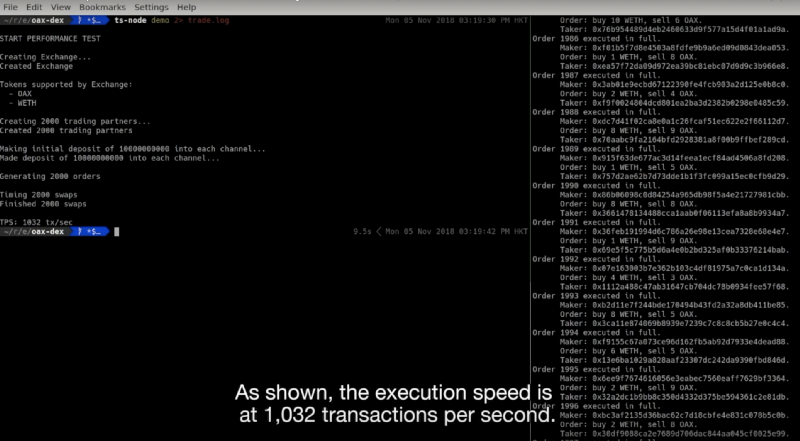
OAX Project Announces Breakthrough; Achieves over 1,000 Transactions per Second (TPS)
Today, OAX Foundation and Enuma Technologies are announcing a major breakthrough in the development of decentralized trading platforms. In preliminary tests, our platform has achieved speeds of over 1,000 transactions per second (TPS) per node, marking real progress towards solving the scalability challenge preventing decentralized exchanges from going mainstream.
The team recently completed performance testing of a new engine leveraging state channel technology, using only a single node server. Given that the system can also scale horizontally by adding nodes, the test indicates that it has the potential to handle over 100,000 or more TPS.
The video shows the performance test in action, with trading between OAX and WETH tokens taking place off-chain. From the screen, you can see how our programmers inputted orders which the system then executed at over 1,000 TPS.
The demo confirms the potential of our tech solution to solve the scalability challenge of the decentralized model and opens up a lot of exciting possibilities for the project. It was performed using a single core from an Intel Xeon processor running at 4GHz and with 4GB of memory. We expect substantially greater performance running on multiple cores and once additional performance optimizations have been factored in.
Currently, many decentralized exchanges handle as few as 5 to 10 transactions per second, while, by comparison, centralized exchanges can handle thousands. Industry commentators have said that until decentralized exchanges can process the volumes of the mainstream exchanges and payments services there’s little chance of mass adoption occurring. It’s been our aim since the beginning to change that and we’re really pleased to be able to share this news with you today which puts us on course to achieve that goal.
For our next step, the team is planning to release a Testnet version of the platform along with a software development kit so that everybody can experiment with it.
There’s obviously more work to be done until we have a platform in a live environment, but we’re getting a whole lot closer. Today marks an important milestone for our project.


